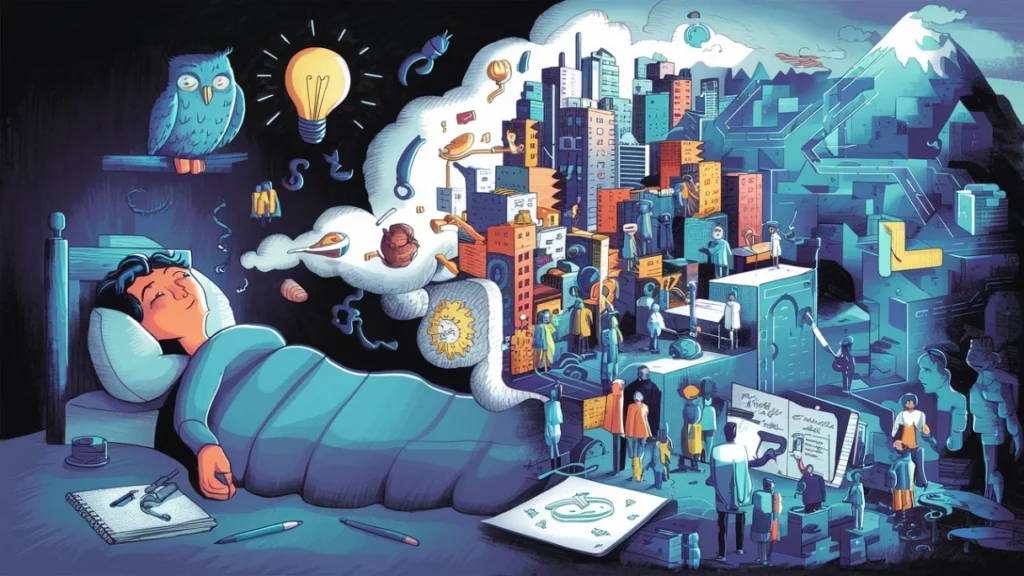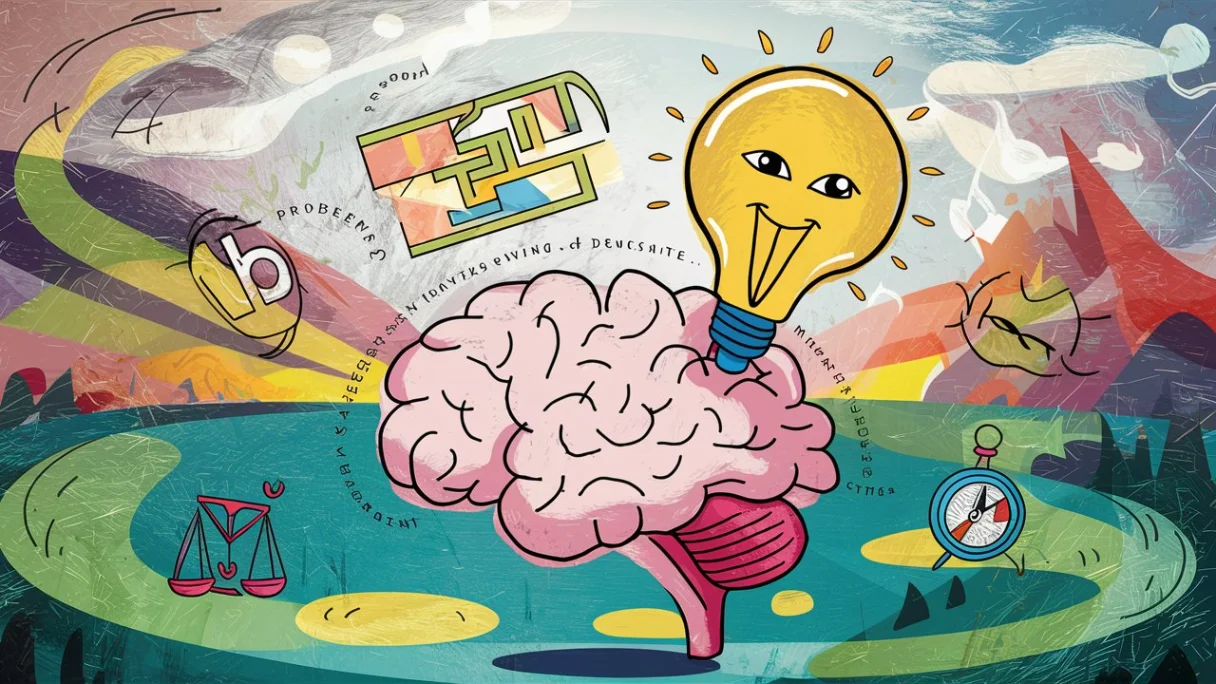Have you ever woken up from a dream with a sudden flash of insight or a solution to a problem that’s been bothering you? If so, you’re not alone. Many people throughout history, from scientists to artists, have credited their dreams with helping them solve problems and make important decisions. In this blog post, we’ll explore the fascinating role that dreams can play in problem-solving and decision-making, and how you can harness the power of your dreams to unlock your creative potential.
The Science of Dreams and Problem-Solving
While the exact purpose of dreams is still a mystery, research has shown that dreaming plays an important role in memory consolidation, emotional regulation, and cognitive processing. During REM (rapid eye movement) sleep, when most dreaming occurs, the brain is highly active, with increased activity in regions associated with emotion, memory, and visual processing.
Some researchers believe that this heightened brain activity during REM sleep allows the brain to make new connections and associations between seemingly unrelated ideas, leading to creative problem-solving. Studies have shown that people who are awakened during REM sleep are better at solving creative problems than those who are awakened during non-REM sleep.
One famous example of dream-inspired problem-solving comes from the chemist August Kekulé, who reportedly discovered the ring-like structure of the benzene molecule after dreaming of a snake biting its tail. Other examples include:
- The inventor Elias Howe, who dreamed of being chased by cannibals wielding spears with holes in the tips, inspiring him to create the first practical sewing machine needle.
- The writer Mary Shelley, who conceived of the idea for her novel “Frankenstein” after a vivid dream.
- The musician Paul McCartney, who reportedly composed the melody for the Beatles song “Yesterday” in a dream.
How Dreams Can Help with Decision-Making

In addition to problem-solving, dreams can also play a role in decision-making. Dreams often reflect our unconscious thoughts and feelings about a particular situation, and can provide valuable insights into our true desires and motivations.
For example, if you’re struggling to decide whether to take a new job or stay in your current position, you might dream about the potential outcomes of each choice. A dream in which you feel excited and fulfilled in your new job could be a sign that it’s the right choice for you, while a dream in which you feel stressed and overwhelmed could indicate that staying put might be the better option.
Of course, it’s important to remember that dreams are not always literal or straightforward. A dream about a new job might not necessarily be about that specific job, but rather about your desire for change or growth in your career. As with any form of self-reflection, it’s important to approach dream interpretation with an open mind and a willingness to explore multiple meanings and interpretations.
Tips for Harnessing the Power of Your Dreams
So how can you tap into the problem-solving and decision-making potential of your dreams? Here are a few tips to get you started:
- Keep a dream journal: As soon as you wake up, write down as many details as you can remember about your dreams. Over time, you may start to notice patterns or themes that can provide valuable insights into your unconscious mind.
- Set an intention: Before you go to sleep, take a few minutes to focus on a particular problem or decision you’re struggling with. Write it down in your dream journal or say it out loud to yourself. This can help prime your unconscious mind to work on the issue while you sleep.
- Practice lucid dreaming: Lucid dreaming is a state in which you become aware that you’re dreaming while you’re still asleep. With practice, you can learn to control your dreams and use them for problem-solving and decision-making. There are many resources available online for learning lucid dreaming techniques, such as reality checks and mnemonic induction of lucid dreams (MILD).
- Pay attention to your emotions: Dreams often reflect our emotional states, so pay attention to how you feel in your dreams. If you experience strong emotions like fear, anger, or joy, take some time to reflect on what those emotions might be telling you about your waking life.
- Seek outside guidance: If you’re having trouble interpreting your dreams on your own, consider seeking outside guidance from a therapist or dream expert. Many people find that talking through their dreams with someone else can provide valuable insights and new perspectives.
The Limitations of Dream-Inspired Problem-Solving

While dreams can be a powerful tool for problem-solving and decision-making, it’s important to recognize their limitations. Not every dream will contain a hidden message or solution, and not every problem can be solved through dreaming alone.
It’s also important to approach dream interpretation with a healthy dose of skepticism. While some dreams may reflect genuine insights or creative solutions, others may simply be the result of random neural activity or the mind’s attempt to process everyday experiences and emotions.
Ultimately, the most effective problem-solving and decision-making strategies involve a combination of rational thinking, emotional intelligence, and creative inspiration. By incorporating dreams into this mix, we can tap into a powerful source of insight and intuition that might otherwise go overlooked.
Real-Life Examples

To illustrate the power of dream-inspired problem-solving and decision-making, let’s take a look at a few real-life examples:
| Person | Problem | Dream | Solution |
|---|---|---|---|
| Jack Nicklaus | Struggling with golf swing | Dreamed of holding golf club differently | Changed grip and improved performance |
| Stephanie Meyer | Writer’s block while working on Twilight sequel | Dreamed of Edward and Bella in meadow scene | Wrote entire scene based on dream |
| Dmitri Mendeleev | Struggling to organize elements into periodic table | Dreamed of elements arranged in table | Woke up and wrote down periodic table |
These examples demonstrate how dreams can provide creative solutions and insights that might not occur to us in our waking lives. By paying attention to our dreams and incorporating them into our problem-solving and decision-making processes, we can unlock a valuable source of inspiration and guidance.
Conclusion
Dreams are a fascinating and mysterious aspect of the human experience, one that has captivated people for centuries. While the exact purpose and meaning of dreams may never be fully understood, there is no denying their potential for inspiring creativity, providing emotional insight, and guiding us towards solutions to life’s challenges.
By keeping a dream journal, setting intentions, practicing lucid dreaming, paying attention to our emotions, and seeking outside guidance when needed, we can learn to harness the power of our dreams for problem-solving and decision-making. And who knows – you might just wake up one morning with the next big idea that changes the world.
So the next time you find yourself struggling with a difficult problem or decision, try tapping into the wisdom of your dreams. You might just be surprised at what you discover.
Sweet dreams!

